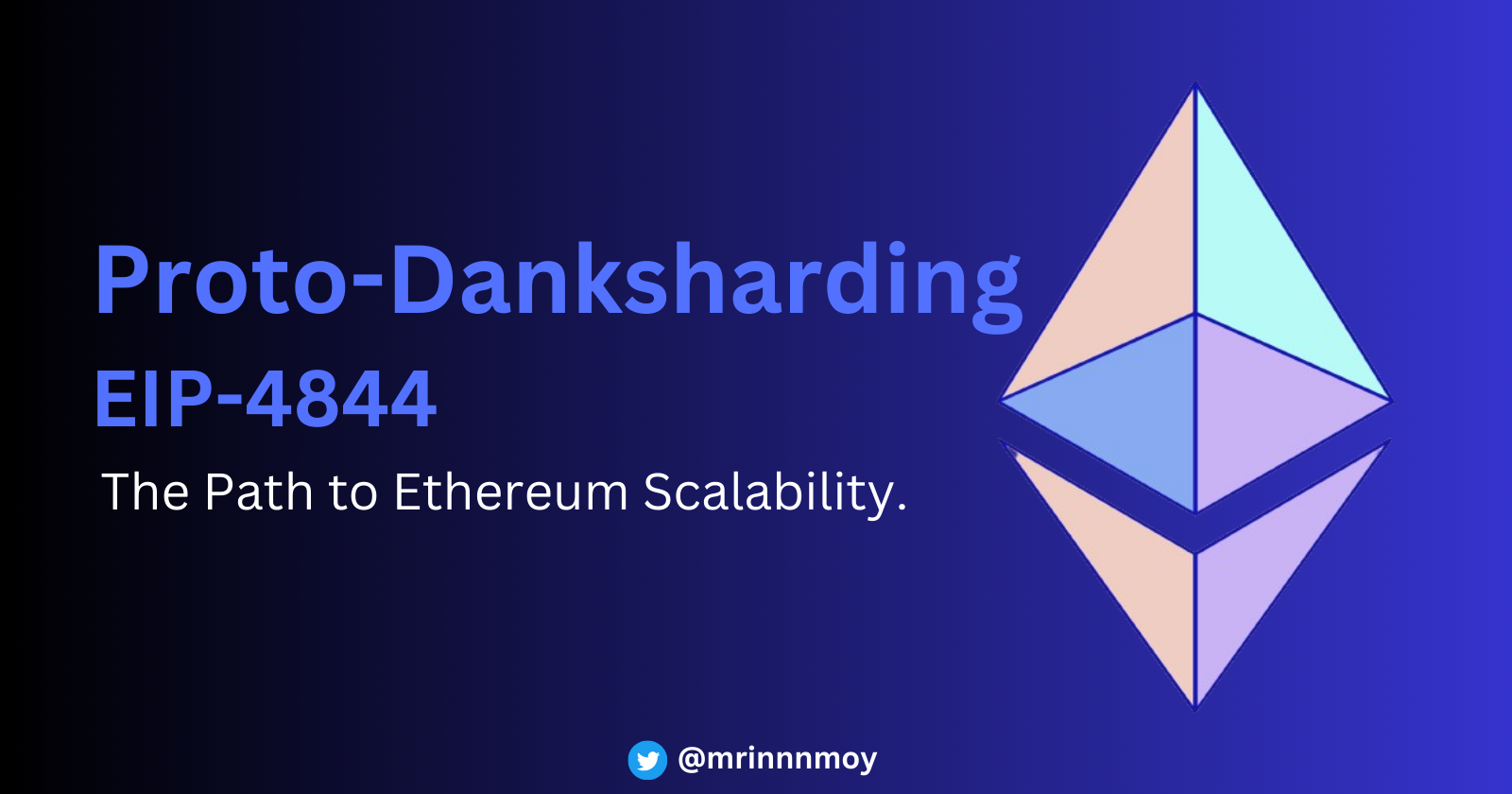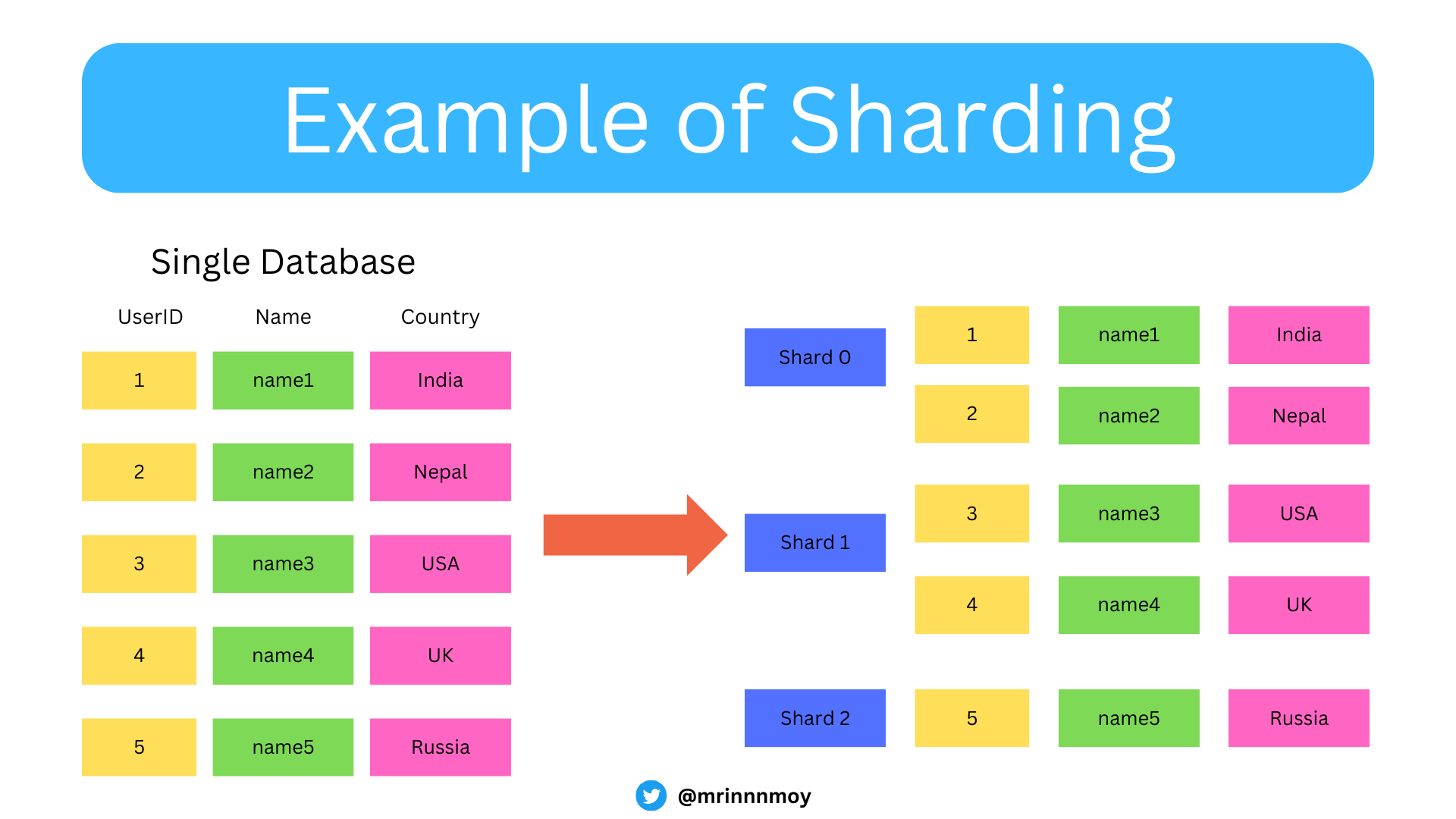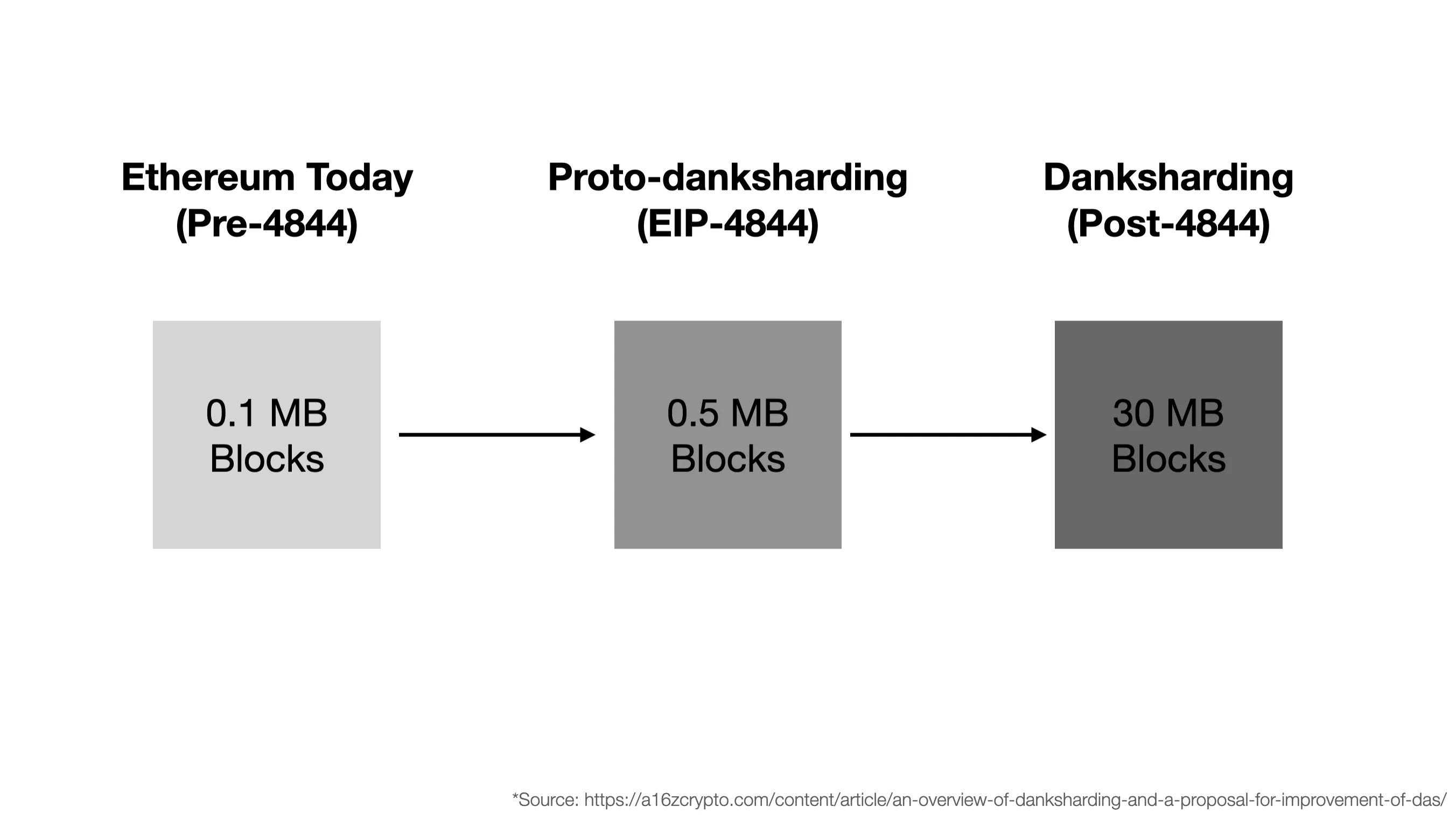EIP-4844 : A Crucial Step Towards Ethereum's Scalability Solution.
 Mrinmoy Porel
Mrinmoy Porel
Introduction.
Ethereum has long been recognized as a pioneer in blockchain technology, offering smart contract capabilities that have enabled a wide range of decentralized applications (dApps). However, as the platform has grown in popularity, its scalability has emerged as a significant challenge. With a limited throughput of approximately 15 transactions per second (TPS) on its base layer and around 55 TPS when considering Layer 2 solutions, Ethereum faces constraints that hinder its ability to scale for mass adoption.
To address this challenge, Ethereum has been exploring various scalability solutions, with sharding emerging as a promising approach. Sharding involves partitioning the Ethereum network into smaller units called shards, each capable of processing its transactions independently. This approach has the potential to significantly increase Ethereum's transaction throughput, paving the way for a more scalable and efficient network.
EIP-4844, also known as Proto-Danksharding, is a proposed upgrade that aims to lay the groundwork for full sharding by introducing new transaction types and logic. In this article, we will delve into the details of EIP-4844, exploring its structure, working principles, benefits, and potential impact on Ethereum's future scalability and mass adoption.
Structure of EIP-4844.
EIP-4844 introduces several key components that are integral to Ethereum's scalability roadmap:
Blob-Carrying Transactions: One of the central features of EIP-4844 is the introduction of blob-carrying transactions. These transactions enable the inclusion of additional data, known as "blobs," within Ethereum blocks. Blobs can store various types of information, including off-chain data related to transactions or smart contracts. By allowing for the inclusion of blobs, EIP-4844 aims to expand the data capacity of Ethereum blocks, facilitating increased transaction throughput.
Consensus Layer Storage: Blobs are stored in a sidecar on the consensus layer of the Ethereum blockchain. This storage mechanism ensures that blobs are accessible to all nodes in the network and are maintained securely as part of the blockchain's consensus process.
Two-Dimensional Fee Market: EIP-4844 introduces a novel fee mechanism for blob data, creating a two-dimensional fee market. This market requires block builders to balance two different limits—the gas limit and the data limit—when accepting transactions. By optimizing the allocation of block space for transactions and blob data, EIP-4844 aims to improve the efficiency of Ethereum's resource utilization.
KZG Commitments: EIP-4844 incorporates KZG commitments, a cryptographic commitment scheme that allows for the binding of blob data without revealing its contents. This feature enhances the privacy and integrity of blob data, ensuring that it remains secure even when stored off-chain.
Working Principle.
To understand the working principle of EIP-4844, it is essential to grasp the concepts of sharding, danksharding, and proto-danksharding:
Sharding.
Sharding is a technique used to partition a database or blockchain into smaller, more manageable parts called shards. Each shard operates independently, processing a subset of the total workload. By distributing the workload across multiple shards, the overall throughput of the system can be increased.

Proto-Danksharding.
Proto-Danksharding, as introduced in EIP-4844, is the first step towards implementing full danksharding. It provides the necessary infrastructure, such as blob-carrying transactions and the two-dimensional fee market, to prepare Ethereum for the eventual transition to full sharding. Proto-Danksharding serves as a crucial intermediary stage, laying the groundwork for Ethereum's future scalability.

Danksharding.
Danksharding is a specific sharding design tailored for Ethereum. It aims to expand the storage space available for data, known as blobs, within Ethereum blocks. This expansion is crucial for accommodating the increased transaction handling capability required to scale Ethereum's throughput to approximately 100,000 TPS.

Benefits of EIP-4844.
Implementing EIP-4844 is expected to yield several significant benefits for Ethereum and its users:
Improved Scalability: By increasing the block space available for data storage, EIP-4844 enhances Ethereum's overall scalability, allowing the network to handle a higher volume of transactions. This scalability improvement is crucial for accommodating the growing demand for Ethereum's services and applications.
Lower Gas Fees: The introduction of blob-carrying transactions and the two-dimensional fee market is expected to result in lower gas fees for Ethereum transactions. This reduction in transaction costs could make Ethereum more accessible to a broader user base, fostering greater adoption and usage of the network.
Enhanced Layer 2 Support: EIP-4844's improvements to Ethereum's infrastructure are also expected to benefit Layer 2 scaling solutions. These solutions, such as rollups, rely on Ethereum's base layer for security and settlement. By optimizing Ethereum's base layer, EIP-4844 could indirectly improve the performance and cost-effectiveness of Layer 2 solutions, making them more attractive for developers and users.
Preparation for Full Sharding: EIP-4844 serves as a critical step towards Ethereum's eventual transition to full sharding. By introducing the necessary components and infrastructure for sharding, EIP-4844 lays the groundwork for Ethereum's long-term scalability and sustainability.
Conclusion
EIP-4844 represents a significant milestone in Ethereum's journey towards scalability. By introducing new transaction types, storage mechanisms, and fee markets, EIP-4844 sets the stage for Ethereum's future evolution. While the implementation of EIP-4844 is expected to bring several benefits, including improved scalability and lower gas fees, its ultimate impact on Ethereum's mass adoption remains to be seen. As a core blockchain developer, it is crucial to monitor the progress of EIP-4844 and its subsequent effects on Ethereum's ecosystem, as it could shape the future of blockchain technology.
Subscribe to my newsletter
Read articles from Mrinmoy Porel directly inside your inbox. Subscribe to the newsletter, and don't miss out.
Written by

Mrinmoy Porel
Mrinmoy Porel
Hi I'm Mrinmoy👋. A software developer for the decentralized web. I contribute to open source, write blockchain tutorials, build projects publicly related to decentralization that the world needs to know about.